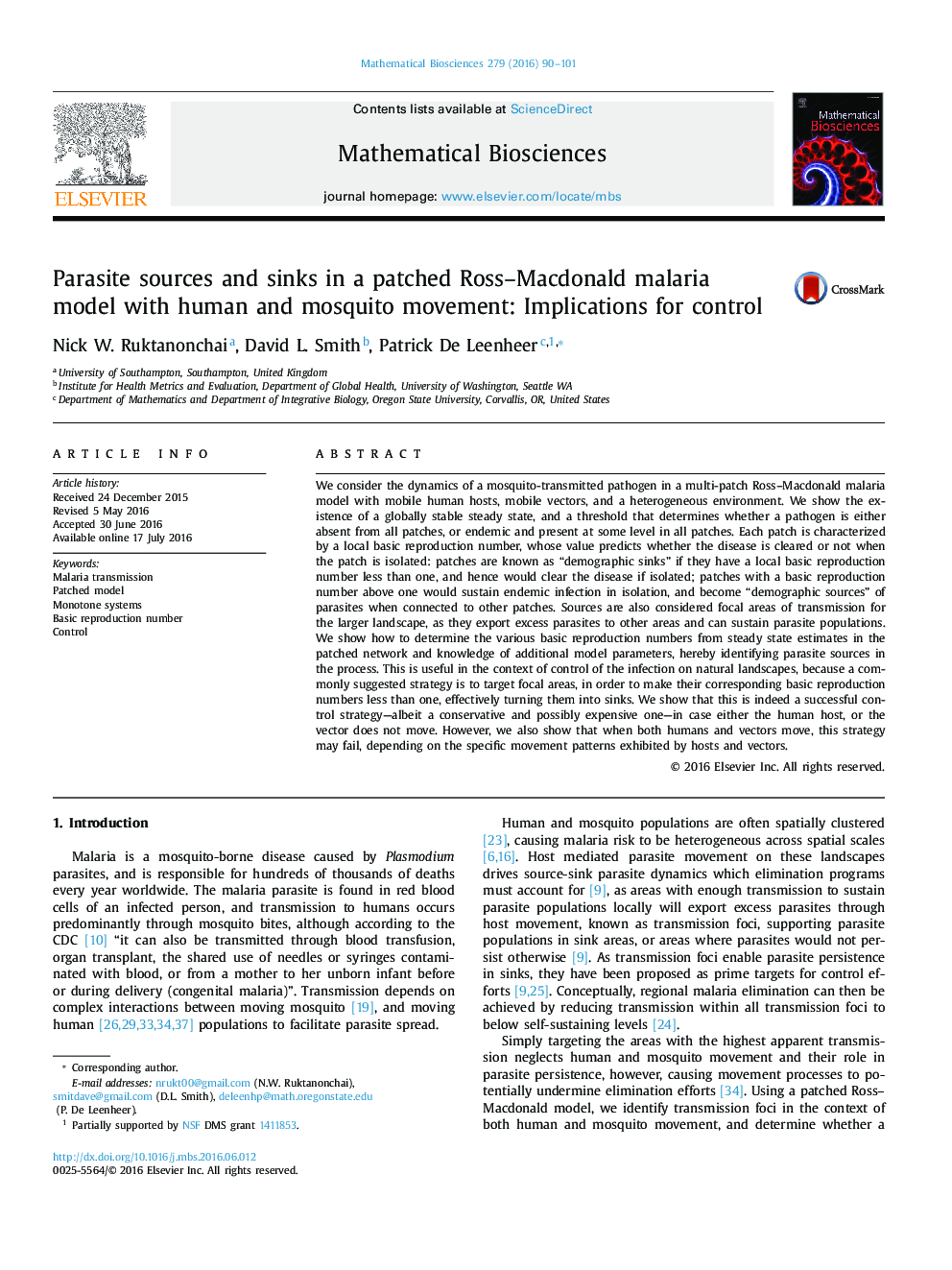| کد مقاله | کد نشریه | سال انتشار | مقاله انگلیسی | نسخه تمام متن |
|---|---|---|---|---|
| 4499828 | 1624001 | 2016 | 12 صفحه PDF | دانلود رایگان |
• Global stability of the extinction or persistence steady state in patched Ross-Macdonald models with host and vector movement is established.
• A method to estimate the basic reproduction numbers in all patches is provided.
• Mobility patterns of both hosts and vectors affect the persistence or extinction of the malaria infection.
• Traditional control strategies aimed at making the basis reproduction numbers of every patches less than one, may fail.
We consider the dynamics of a mosquito-transmitted pathogen in a multi-patch Ross–Macdonald malaria model with mobile human hosts, mobile vectors, and a heterogeneous environment. We show the existence of a globally stable steady state, and a threshold that determines whether a pathogen is either absent from all patches, or endemic and present at some level in all patches. Each patch is characterized by a local basic reproduction number, whose value predicts whether the disease is cleared or not when the patch is isolated: patches are known as “demographic sinks” if they have a local basic reproduction number less than one, and hence would clear the disease if isolated; patches with a basic reproduction number above one would sustain endemic infection in isolation, and become “demographic sources” of parasites when connected to other patches. Sources are also considered focal areas of transmission for the larger landscape, as they export excess parasites to other areas and can sustain parasite populations. We show how to determine the various basic reproduction numbers from steady state estimates in the patched network and knowledge of additional model parameters, hereby identifying parasite sources in the process. This is useful in the context of control of the infection on natural landscapes, because a commonly suggested strategy is to target focal areas, in order to make their corresponding basic reproduction numbers less than one, effectively turning them into sinks. We show that this is indeed a successful control strategy—albeit a conservative and possibly expensive one—in case either the human host, or the vector does not move. However, we also show that when both humans and vectors move, this strategy may fail, depending on the specific movement patterns exhibited by hosts and vectors.
Journal: Mathematical Biosciences - Volume 279, September 2016, Pages 90–101
